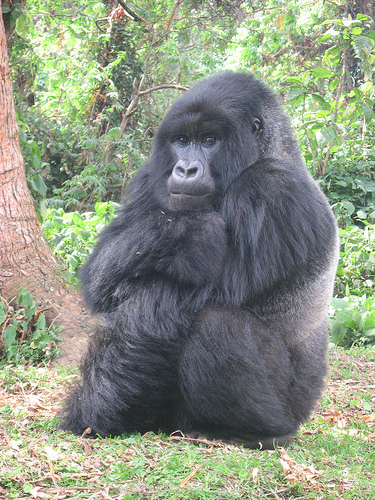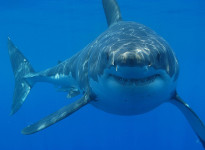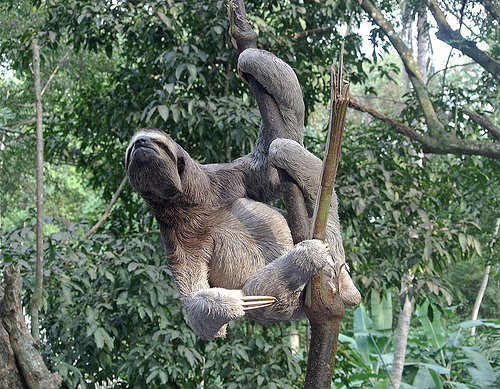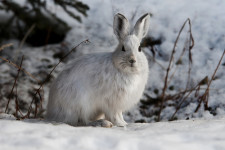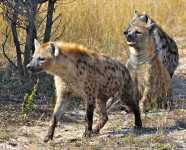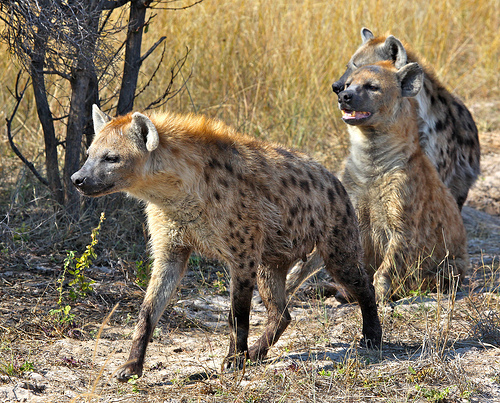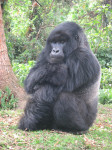
Mountain gorillas are powerful but shy.
- Mountain gorillas are one of the largest primates in the world, and are native to eastern and central areas of Africa, specifically in the Virunga mountains in Rwanda, Democratic Republic of Congo and Uganda, and Uganda’s Bwindi Impenetrable National Park.
- Mountain gorillas are a type of Eastern gorilla, or Gorilla beringei, from the Gorilla genus, that come from the family Hominidae, the family of great apes.
- Mountain gorillas have black coloured long, thick fur, and range from 100 to 220 kilograms (220 to 490 pounds) in weight and can stand as tall as 1.2 to 1.9 metres (4 to 6.2 feet).
- Mountain gorillas are the smallest out of the two Eastern gorilla subspecies, and have the scientific name Gorilla beringei beringei, and the males are often known as ‘silverbacks’ due to the fur on their back that changes to a silver or gray colour as they grow older.
- Mountain gorillas are commonly found in dormant volcanic mountainous regions, at elevations of 2,200 to 4,300 metres (7,200 to 14,100 feet).
Mountain Gorilla Image courtesy of David Bacon/Flickr
- Mountain gorillas typically live in groups of ten or more, often with a dominant male and many females, and live, on average, up to 35 years.
- A mountain gorilla’s diet mainly consists of vegetation, up to 34 kilograms (75 pounds) a day, and vertebrates of small size.
- Mountain gorillas are classified as critically endangered, with only 800 to 1000 individuals left in the wild, due to poaching, disease, war and habitat loss.
- Mountain gorillas have been shown to be afraid of caterpillars and chameleons, and have a dislike of water.
- The young of mountain gorillas hang onto their mothers’ back for up to 3 years, from approximately 4 months old.
Bibliography: Mountain Gorilla, 2014, National Geographic, http://animals.nationalgeographic.com.au/animals/mammals/mountain-gorilla/
Mountain Gorilla, 2014, Wikipedia, http://en.wikipedia.org/wiki/Mountain_gorilla



